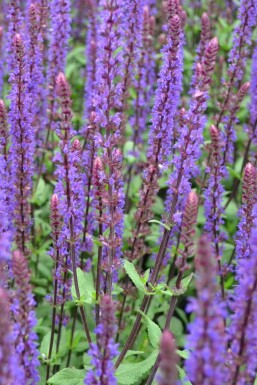




Welcome to the enchanting world of Salvia, commonly known as sage, a genus celebrated not only for its culinary prowess but also for its ornamental beauty. This diverse plant offers a tapestry of foliage colors ranging from vibrant green to soft grey, with select varieties boasting a stunning purple hue. The Salvia's delicate flowers, which can adorn your garden in hues of blue, purple, pink, and white, emerge as a vivid contrast against its foliage, creating a picturesque display. While not evergreen, the sage plant's seasonal progression adds a dynamic element to garden landscapes, ensuring a captivating transformation year-round.





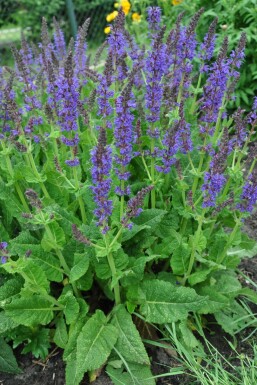

60cm



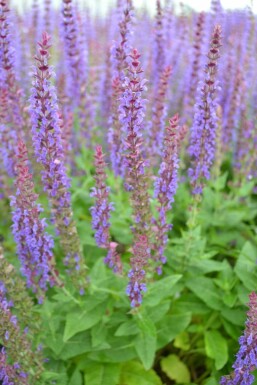



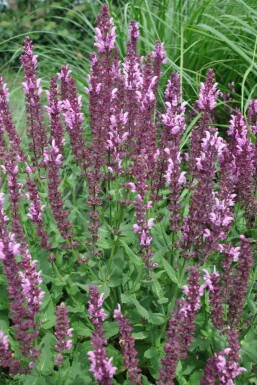

60cm


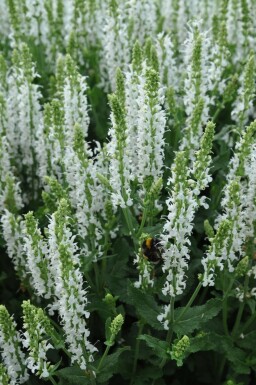

50cm



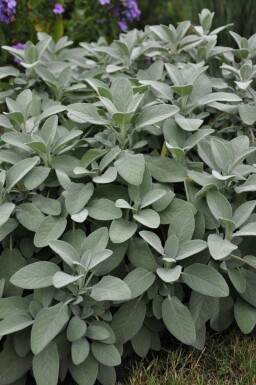

60cm



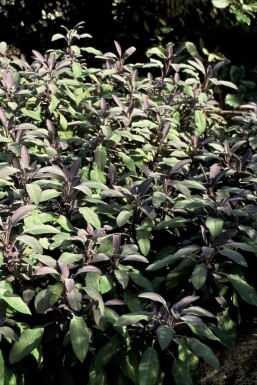

60cm




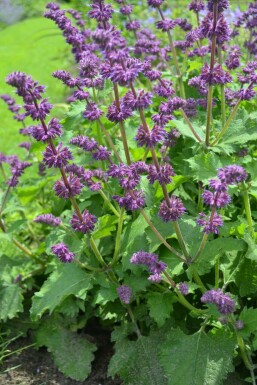

50cm


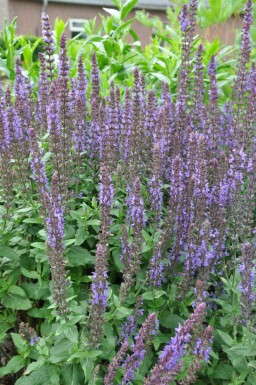

50cm



The genus Salvia, commonly referred to as sage, is a remarkable group of plants known for their versatility and vibrant displays. With a myriad of species under its name, Salvia offers gardeners an array of options for adding color and life to their gardens. These hardy perennials and annuals, which include both evergreen and deciduous species, are cherished for their long flowering periods that span from late spring to autumn.
Salvia plants are not only a feast for the eyes but also attract a host of pollinators with their nectar-rich flowers. Adaptable to a wide range of soil types, provided they are well-drained, these plants are a perfect fit for borders, group plantings, edgings, solitary statements, and container gardens. The sun-loving Salvia thrives in full sun to partial shade, showcasing hues of blue, purple, pink, and white throughout their blooming months.
Key Features:
Tips:
Embrace the sensory splendor of Salvia, commonly known as sage, a genus that graces gardens with its aromatic presence and a profusion of color. Revered for its durability and the vibrant hues of its flowers, sage is a perennial favorite among garden enthusiasts. Its hardy nature ensures a display that returns year after year, offering a feast for the eyes and the senses. Whether used as a standout specimen or as part of a harmonious perennial border, the varieties of Salvia we offer are incomparable in their beauty and vigor.
We would like to provide some tips on how to plant and care for a Salvia. By following these tips, you can be sure to enjoy your Salvia for a long time.
For optimal growth and flowering, Salvia should be situated in a location that receives full sun to partial shade. These adaptable plants flourish across various soil types provided they are {R. well-drained}, ensuring that their roots are not in overly saturated conditions. The radiant blooms, ranging from blue and purple to pink and white, reach their full potential with ample sunlight. Placement in a sunny border, grouped with other sun-loving perennials, or even in containers, will allow Salvia to contribute its vibrant hues and textured foliage to any garden design.
For optimal growth, Salvia should be planted in well-drained soil, thriving in both sun and partial shade. When planting, ensure there is ample space between each pot to accommodate the plant's mature size. After placing the plant in the ground, water moderately to establish roots. This species is versatile, suitable for various garden designs including borders, group plantings, and containers. Salvia's vibrant blooms and diverse foliage colors contribute to its ornamental appeal throughout the growing seasons, from the fresh hues of spring to the enduring tones of autumn.
For optimal growth, Salvia benefits from a balanced fertilization routine. Begin fertilization in the early spring to support vigorous growth and a profusion of blooms. A slow-release, balanced fertilizer applied according to package instructions will suffice, ensuring a steady supply of nutrients throughout the growing season. A second application should be considered in midsummer to sustain the plant's energy needs, particularly as it prepares for its flowering period from June through August, and possibly into September.
It's important to apply fertilizer evenly around the base of the plant, avoiding direct contact with the foliage to prevent damage. Watering the plant after fertilizing helps to distribute the nutrients into the soil, allowing for better uptake by the roots. Regular fertilization, when combined with proper planting and care, will ensure a display of vibrant flowers and healthy foliage throughout the growing season.
To encourage a robust form and a second bloom, it is advisable to deadhead the spent flowers of Salvia throughout the blooming season. This process involves the removal of wilting flowers, which not only enhances the visual appeal but also stimulates further growth. Although Salvia varieties can bloom from late spring into autumn, they generally require minimal pruning. After flowering, a light pruning can help maintain a tidy appearance and prevent self-seeding, ensuring that the plant remains a well-defined presence in the garden.
Salvia species thrive with moderate watering, ensuring the soil remains moist but well-drained. In their preferred sunny to partially shaded locations, the plants will need consistent watering, especially during warm, dry periods. Over-watering should be avoided as it can lead to poor {T. root system} health. When watering, it is beneficial to do so at the base of the plant, early in the morning or late evening, to reduce evaporation and allow for optimal soil penetration. The frequency of watering may need to be adjusted based on rainfall and temperature fluctuations.
Salvia thrives in well-draining soil, ensuring that the root system remains healthy. For those who cultivate it in pots, be mindful of choosing a container with adequate drainage holes. Salvia's aromatic leaves are a delightful sensory addition to any garden space, releasing their fragrance when brushed against or crushed. Furthermore, the plant's resilient nature makes it a reliable choice for gardeners, as it requires minimal care once established in an optimal environment.
To ensure the continued health and vigor of Salvia, division is recommended as an effective method of propagation. This process, ideally conducted in either spring or autumn, involves gently lifting the plant from the soil and separating it into smaller segments. Care should be taken to keep the root structures intact as they are repositioned into well-draining soil. This technique not only stimulates new growth but also helps control the size and spread of the plant, providing an excellent opportunity to expand the garden display with these hardy and vibrant perennials.
Discover the enchanting world of Salvia, a diverse genus that captivates with its vibrant blooms and aromatic foliage. Perfect for adding a touch of color and texture to any garden, Salvia species are renowned for their drought resistance and long flowering periods, making them an ideal choice for gardeners seeking both beauty and resilience.
